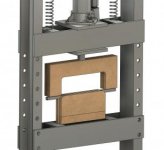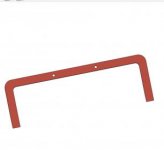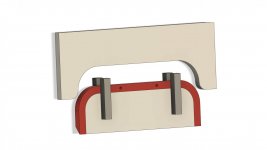I am curious if this idea is possible, I have never bent steel / made a hydraulic fixture before. I have read that you need to take kinking of the steel tubing into consideration. Ideally if this method works I may CNC machine the die / jig out of aluminum, but I have access to a bunch of MDF to prototype and think it may be cool to try. The tubing will be .75" with .0625 wall.
Jig / Forming Die Idea:

Part I want to make:

Jig / Forming Die Idea:

Part I want to make:






